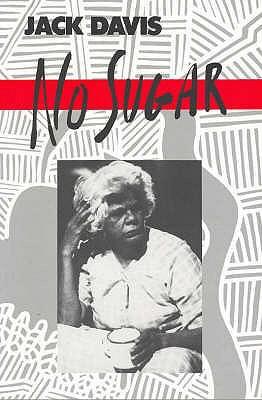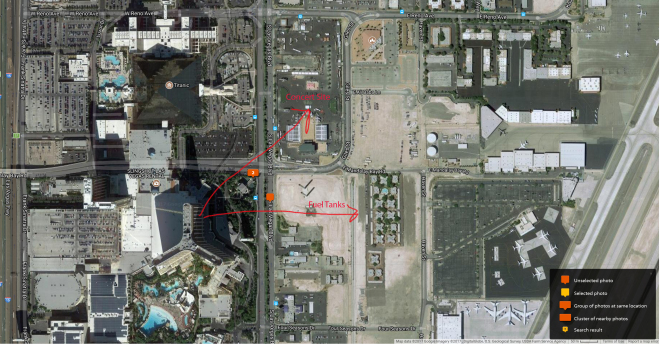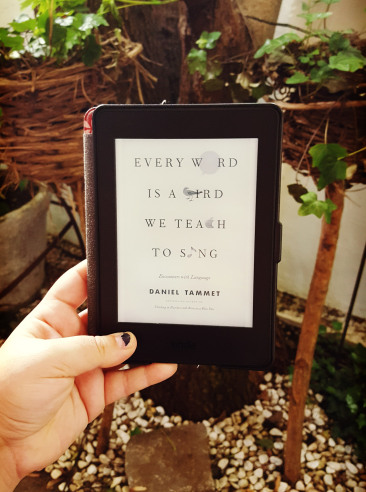2017 Indigenous Literature Week at ANZ LitLovers

Jack Davis (1917-2000), as we saw in my review of his childhood memoir, A Boy’s Life (here), had a normal rural working class upbringing in those years of scarcity prior to World War II, with just a few months at the Moore River Native Settlement in 1932 to remind him of his status as a non-white. The memoir ends in the 1940s with him droving in the Gascoyne, arid country, probably given over to sheep in those days, 1,000 km north of Perth, while one of his brothers and some of his school mates went away to war.
In the 50 pages Tony Hughes-d’Aeth devotes to Davis in his monumental (600pp) Like Nothing on this Earth: A Literary History of the Wheatbelt, he gives a solid account of the dispersal of the Noongar – the Indigenous people of southwest WA – first by the pastoral industry in the 1800s and then by the transition to wheat farming in the 1900s. In the years before widespread mechanisation Aboriginal labour was vital, though generally unmentioned in rural histories. After WWII Aboriginal people, both Noongar and those from up north (like Davis’ parents), often dumped in the south west via the ‘Native Settlements’ at Carrolup and Moore River, and more and more often unemployed, settled on the outskirts of country towns.
Davis’ mother, after the death of his father, had gone to live with her sister at Brookton, 140 km east of Perth, where the jarrrah forested Darling Ranges merge into the gently rolling hills and open plains of the WA wheatbelt, and there she married into the local Indigenous Bennell family. H-d’A quotes Davis:
Reserves were small useless parcels of land left over from the great land-grab. Once the property needs of the farming community and its town had been met, a few discarded acres would be set aside as a reserve for Aborigines. It seldom had any economic value and certainly never had sufficient natural resources to support a traditional Aboriginal lifestyle. Itinerant labouring work was the only means of support an Aborigine could expect …
Davis lived for a time at the Brookton reserve both before and after the War, and through his connection with the Bennells was introduced into Noongar culture. In passing, H-d’A comments on Nene Gare’s The Fringe Dwellers (my review) and adds the information that Gare’s husband was with the Dept of Native Affairs, and that was the origin of her material, though she was also friends with Indigenous writer, Alice Nannup.
Davis had apparently begun writing poetry as early as his Moore River days. In 1937 he had a poem accepted by the Carnarvon Northern Times but it was never printed. Davis blamed racial discrimination and thereafter wrote only “for my own amusement”. Finally, in 1970, when he was 53 and running the Aboriginal Centre in Beaufort St, Perth, four decades of Davis’ poetry were collected in The First Born and other poems with a long preface based on the transcript of a biographical interview with Davis by the novelist Richard Beilby, and a ‘Bibbulmun’ (which I think is a Noongar sub-group though the two words sometimes appear interchangeable. I’m sure Daisy Bates says Bibbulmun where we would now say Noongar) vocabulary. Oodgeroo (Kath Walker), a Noonuccal (Stradbroke Is., Qld) woman had published two books of poetry in the 1960s – the first by an Aboriginal person – with sensational success and this may have made publication of Davis’ work possible, or at least more likely.
The poems in Jack Davis’ The First Born are generally short, rhyming lyrics, often in the elegiac tonality that was one of the key-notes in Walker’s poems, although they did not follow hers – at least not yet – down the path of political manifesto …
There is a sense of every-day Aboriginal experience to Davis’ poems. I’ll quote one, ‘Camped in the Bush’ (note the truck!), set in the Ranges outside Perth on the main east-west railway line.
Over the campfire
The bat cries shrill
And a “semi” snarls
On the Ten Mile Hill
And the lonely whistle
Of the train at night,
Where my kingdom melted
In the city’s light
In 1968 Kevin Gilbert had written The Cherry Pickers, the first play by an Aboriginal to be performed (in 1971), though Davis credits Kath Walker with his move into drama: “As early as 1972 I had been experimenting with theatre … I had seen the script of a short play by Kath Walker …”. His first play, The Dreamers was staged at the Bunbury Arts Festival (a provincial city south of Perth) in 1972, leading to his ‘great trilogy’ of plays – Kullark (1979), The Dreamers (1982) and No Sugar (1985).
Kullark was performed alongside Dorothy Hewett’s The Man from Mukinupin. H-d’A writes:
Whereas in Hewett the Aboriginal characters perturb and destabilise the white town’s sense of itself, in Davis we see the perspective reversed for the first time – how white people and, in particular, white history looks to the Indigenous.
Davis’ plays are all realist dramas, the first two ostensibly played out in the present, but actually through speech and flashbacks demonstrating the intersection of family history and white settler racism. In The Dreamers, the dying Worru bridges the past and the future, and as he dies his language becomes more and more Noongar, illustrating the language’s survival against all odds.
No Sugar, set in 1929-34, is based on the removal and internment of a whole Noongar community, barely legal even under the 1905 Aborigines Act, from Northam, 100 km east of Perth and in the (conservative) Premier’s own electorate, to Moore River. The penalty for escaping from Moore River was six months in Fremantle Jail. The 1929 setting enables Davis to comment not just on the Depression, but also on the WA Centenary, and by implication on the (then) recent, 1979 state Sesquicentenary and upcoming ‘national’ 1988 Bicentenary celebrations (the 200th anniversary of the movement of the new British settlement from Botany Bay to Sydney Harbour, an event of little significance outside NSW and increasingly offensive to the Indigenous people forced along with the rest of us to celebrate it).
Interestingly, the infamous Chief Protector, A.O. Neville, is a character in the play as the action initially moves backwards and forwards between the Mundays and Millimurras at the town camp, the Northam police station, and the Chief Protector’s office. In the second act, the whole camp, 89 people, has been moved to Moore River. “The climax of the play has Jimmy Munday and the others subverting the ceremonial visit of A.O.Neville to Moore River on Australia Day 1934. Jimmy confronts Neville and [Superintendent] Neal, jeering them about the defeat of [Premier] Mitchell in his seat of Northam.”
Davis’ drama asks who was A.O. Neville ‘protecting’:
… the major beneficiaries of the “Protection” offered in the [1905] Act were the mainly white citizens of Western Australia, particularly those living in rural areas. In the emerging towns of the wheatbelt, the provisions of the Act were used to institute a form of apartheid in which Aboriginal people were kept out of the towns through curfews and other forms of soft or hard police power.
Hughes-d’Aeth concludes: “What Davis is able to do, better than anyone before or since, is to capture the complexity of Aboriginal policy as it affected the lives of thousands of people during the twentieth century.”
Jack Davis, No Sugar, Currency Press, Sydney, 1986
Tony Hughes-d’Aeth, A Literary History of the Wheatbelt, UWAP, Perth, 2017
Jack Davis Part I, A Boy’s Life (here)
see also: Mairi Neil’s review (here) of Jack Davis’ poetry in her blog Up the Creek with a Pen …
and my review of Kim Scott’s researching of his Noongar heritage, Kayang and Me (here)
I see in Hughes-d’Aeth’s Notes that there is a biography of Davis by Keith Chesson (211pp) which is also available as an audio book from WA Assoc’n for the Blind (Trove)
Advertisements Share this:




